Pip Install Requirements.Txt -R
The “pip install requirements.txt -r” command is a powerful tool for managing and installing packages in Python. It allows you to easily install all the dependencies listed in a requirements.txt file, making package management a breeze. In this article, we will explore the benefits of using a requirements.txt file, the syntax and usage of the command, handling dependencies and their versions, working with extras and editable installs, tips for efficiently managing requirements.txt, and common issues and troubleshooting tips.
Benefits of using a requirements.txt file
1. Simplified package management: By listing all the required packages in a single file, the process of managing and installing dependencies becomes more streamlined. You don’t have to manually install each package one by one, as the command will take care of it for you.
2. Reproducible environments: Using a requirements.txt file ensures that your project can be easily replicated on different machines or by other developers. By specifying the exact version of each package, you can ensure consistent behavior and avoid any compatibility issues.
3. Collaboration and sharing: When collaborating on a project, sharing the requirements.txt file allows others to quickly set up the same environment without any additional effort. This promotes collaboration and reduces the chances of conflicts arising from different dependency versions.
Syntax and usage of “pip install requirements.txt -r”
Understanding the command and its parameters: The “pip install requirements.txt -r” command is used to install the packages listed in a requirements.txt file. The “-r” flag specifies that the packages should be installed from the requirements file.
Specifying the path to the requirements.txt file: In order for the command to work, you need to provide the path to the requirements.txt file. You can do this by either providing the absolute path or the relative path from the current working directory.
Installing requirements from multiple files: If you have multiple requirements files in your project, you can include them all by specifying each file path with the “-r” flag. This allows you to have separate files for different environments or for specific purposes.
Handling dependencies and their versions
Specifying package names and versions in requirements.txt: Each line in the requirements.txt file corresponds to a package and its version. You can specify a specific version number using the “==”, “>=”, “<=", or other version control operators. Alternatively, you can use constraints like "~=X.Y.Z" to allow for minor version updates. Resolving conflicts and inconsistencies: In some cases, there might be conflicts or inconsistencies between the requirements of different packages. When using the "pip install requirements.txt -r" command, pip will automatically try to resolve these by selecting the best compatible version for each package. However, manual intervention may be required if conflicts cannot be automatically resolved. Using version control operators and constraints: To ensure flexibility in package management, you can use version control operators and constraints. For example, specifying ">=1.0″ allows for any version equal to or greater than 1.0 to be installed. Constraints like “~=1.0” allows for minor updates within the same major version.
Using comments and environment markers
Adding comments for better readability and documentation: Comments in the requirements.txt file start with the “#” character. They can be used to explain the purpose of a specific package or to provide additional information for other developers.
Utilizing environment markers for conditional dependencies: Environment markers allow you to specify dependencies that are only required in certain environments or conditions. For example, you can specify a package that is only needed for testing or development purposes.
Avoiding unnecessary dependencies with environmental markers: By using environment markers, you can avoid installing unnecessary dependencies in certain environments. This helps to keep your environment clean and optimized for the specific use case.
Working with extras and editable installs
Including optional extras for additional functionality: Some packages provide optional extras that can be installed for additional functionality. You can specify these extras in the requirements.txt file by appending the package name with square brackets and the specific extras you want to include.
Installing packages in editable mode for development purposes: If you need to make changes to a package while developing, you can install it in editable mode. This allows you to work directly with the package’s source code and have the changes reflect immediately in your project.
Updating requirements.txt to include extras and editable installs: If you add new extras or editable installs to your project, make sure to update the requirements.txt file accordingly. This ensures that others can install the necessary dependencies, including any optional extras or editable installs.
Tips for efficiently managing requirements.txt
Grouping dependencies for better organization: To improve readability and organization, you can group related dependencies together in the requirements.txt file. For example, you can group packages required for database interactions or web development separately.
Using the freeze command to generate the requirements.txt file: The “pip freeze” command generates a requirements.txt file based on the currently installed packages in your environment. This is helpful when starting a new project or when you want to share your project’s dependencies.
Regularly updating and maintaining the requirements.txt file: It is important to regularly update your requirements.txt file to include any new dependencies or updates. This ensures that your project is using the latest packages and helps avoid any security vulnerabilities or compatibility issues.
Common issues and troubleshooting
Handling missing packages or dependencies: If the “pip install requirements.txt -r” command fails due to missing packages, make sure that all the required packages are listed in the requirements.txt file. Check for typos and ensure that the package names are correct.
Resolving conflicts between different packages: Sometimes, conflicts can arise when multiple packages have incompatible versions or dependencies. In such cases, you may need to manually resolve the conflicts by updating the requirements.txt file or seeking help from the package’s documentation or community.
Troubleshooting installation errors and failures: If the installation fails or encounters errors, it is important to carefully read the error messages and understand the root cause. This can help in identifying and rectifying any issues with the dependencies or the installation process.”
FAQs:
Q: Can I specify multiple requirements.txt files with the “pip install requirements.txt -r” command?
A: Yes, you can specify multiple requirements.txt files by using the “-r” flag multiple times, followed by the path to each file.
Q: How often should I update my requirements.txt file?
A: It is recommended to regularly update your requirements.txt file whenever there are changes or updates to your project’s dependencies. This helps ensure that your project stays up to date and avoids any security vulnerabilities or compatibility issues.
Q: Can I use environment markers for specific Python versions?
A: Yes, you can use environment markers to specify dependencies that are only required for specific Python versions. This allows you to maintain compatibility across different Python versions.
Q: What should I do if the “pip install requirements.txt -r” command fails?
A: If the command fails, carefully read the error message to identify the issue. Check for missing packages, conflicts, or any other errors. You can also consult the package’s documentation or community for troubleshooting advice.
Q: Can I use a requirements.txt file for projects in other programming languages?
A: The “pip install requirements.txt -r” command is specific to Python and its package manager, pip. However, other programming languages may have similar tools or methods for managing dependencies. Consult the documentation of the specific language or package manager for more information.
How To Install Python Libraries Using Requirements.Txt
How To Install Requirements Txt In Pip Python?
When working with Python projects, it is common to have a requirements.txt file that includes a list of all the dependencies needed for the project to run smoothly. These dependencies could be external libraries or plugins that the project relies on. In this article, we will explore in depth how to install requirements.txt using pip, the default package manager for Python.
Section 1: Understanding the requirements.txt file
The requirements.txt file is a simple text file that lists all the dependencies along with their versions. Each dependency is mentioned on a new line, making it easier to manage and update when required. Here is an example of a requirements.txt file:
“`
numpy==1.19.3
pandas==1.1.4
scikit-learn==0.23.2
“`
In this example, the project requires NumPy version 1.19.3, pandas version 1.1.4, and scikit-learn version 0.23.2.
Section 2: Setting up a virtual environment
Before we delve into installing the requirements.txt file, it is recommended to create a virtual environment for your Python project. A virtual environment provides an isolated environment where you can install packages specific to your project without interfering with other projects or the system’s default Python installation.
To create a virtual environment, open the command prompt or terminal and navigate to your project’s directory. Then run the following command:
“`
python -m venv venv
“`
This command creates a new virtual environment named “venv.” You can choose any other name you prefer. Once the command completes, activate the virtual environment by running:
“`
source venv/bin/activate
“`
or on Windows:
“`
venv\Scripts\activate
“`
Section 3: Installing packages using pip
Now that you have set up the virtual environment, it’s time to install the packages listed in the requirements.txt file. Ensure that you are in the project directory and the virtual environment is activated. Use the following command to install the packages:
“`
pip install -r requirements.txt
“`
The above command tells pip to install all the packages listed in the requirements.txt file. It will automatically download and install the specified versions of the packages. After running this command, pip will display the progress and success messages for each package installation.
Section 4: Verifying installed packages
To ensure that the packages were successfully installed, you can use the following command:
“`
pip list
“`
This command lists all the packages installed in your virtual environment, along with their versions. Compare the listed packages with the ones mentioned in your requirements.txt file to confirm the successful installation.
Section 5: Updating packages
Over time, package versions may change or new improvements and bug fixes may be released. To keep your project up to date, it is necessary to update the packages installed. You can update individual packages using the following command:
“`
pip install –upgrade
Replace `
“`
pip install –upgrade -r requirements.txt
“`
This command will update all the packages specified in the requirements.txt file to their latest versions.
FAQs:
Q1: How can I generate a requirements.txt file for my project?
To generate a requirements.txt file for your project, you can use the following command in your activated virtual environment:
“`
pip freeze > requirements.txt
“`
This command saves a list of all the installed packages and their versions into a requirements.txt file.
Q2: What if there are conflicts in the dependencies?
Sometimes, certain packages may have conflicting dependencies, which could result in installation errors. In such cases, you can try updating the conflicting package to its latest version or manually solving the conflicts by installing specific versions of the dependencies.
Q3: Can I install packages from a different requirements file?
Yes, you can install packages from a requirements file located at a different location by specifying the file path instead of “requirements.txt” in the pip install command:
“`
pip install -r /path/to/other_requirements.txt
“`
Conclusion:
Installing the requirements.txt file is essential to ensure a consistent development environment for your Python projects. By following the steps outlined in this comprehensive guide, you can effortlessly set up a virtual environment, install dependencies, and keep your project up to date. Remember to regularly check for updates and maintain good documentation for your project’s requirements.txt file.
How To Install Pip Install Requirements?
When working on a Python project, you may often need to install multiple packages and dependencies to ensure smooth execution. Python’s package manager, pip, simplifies the process of installing, managing, and updating these packages. In this article, we will walk you through the steps to install pip install requirements and provide essential information to help you get started.
What is pip and why is it important?
Before we delve into the installation process, let’s understand pip’s significance. Pip is a package manager for Python that allows users to install, update, and uninstall software packages easily. It simplifies the process of installing third-party libraries and tools, which are essential for Python development. With a vast collection of open-source packages, pip provides developers with access to a rich ecosystem of tools and libraries to enhance their projects.
Installing pip
Before you can use pip, you need to ensure it is installed on your system. For most Python distributions, pip is usually included by default. To check if pip is installed, open your terminal or command prompt and execute the following command:
“`
pip –version
“`
If pip is already installed, the command will display the version information. Otherwise, you will need to install pip on your system.
To install pip, follow these steps:
1. Visit the official Python website at https://www.python.org/downloads/ and download the latest version of Python for your operating system.
2. Run the installer and select the option to “Add Python to PATH” during the installation process. This ensures that pip and other Python utilities are accessible from the command line.
3. Once the installation is complete, open your terminal or command prompt and execute the `pip –version` command to verify that pip is installed correctly.
Installing requirements with pip
Once you have pip installed, you can quickly install a list of requirements for your Python project. A requirement file typically contains a list of dependencies that need to be installed. These dependencies may include other Python packages, specific versions of libraries, or even operating system packages.
To install requirements using pip, follow these steps:
1. Create a file named “requirements.txt” in the root directory of your project.
2. Open the requirements.txt file using a text editor.
3. List your project’s dependencies, with each requirement on a separate line. For example:
“`
flask
requests
numpy==1.19.5
“`
4. Save the requirements.txt file.
Now, with the requirements file in place, you can install the dependencies using the following command:
“`
pip install -r requirements.txt
“`
Pip will read the requirements.txt file and install each package specified, along with its dependencies. It will ensure that the correct versions are installed and that any conflicting dependencies are resolved.
FAQs about installing pip install requirements:
Q: Can I install specific versions of packages using pip install requirements?
A: Yes, you can specify the exact version of a package in the requirements.txt file by adding “==version_number” after the package name. For example, “numpy==1.19.5” will install version 1.19.5 of the numpy package.
Q: Are the installed packages isolated from other Python projects?
A: By default, pip installs packages globally on your system. However, it is recommended to use virtual environments to isolate your project’s dependencies. Virtual environments create an isolated Python environment specific to your project, preventing conflicts between packages used in different projects.
Q: How can I check if all requirements were installed successfully?
A: After executing the `pip install -r requirements.txt` command, pip will display the installation progress and any errors encountered. If there are no error messages, it indicates that the installation was successful.
Q: Can I update packages installed with pip install requirements?
A: Yes, you can update packages by modifying the requirements.txt file with the desired package versions and running the `pip install -r requirements.txt` command again. Pip will update packages to the specified versions.
In conclusion, pip is a powerful tool for managing dependencies in Python projects. By following the steps outlined above, you can easily install a list of requirements for your project and ensure a smooth development process. With pip’s support for specifying versions, resolving dependencies, and global or virtual environment installations, you have the flexibility to manage your project efficiently.
Keywords searched by users: pip install requirements.txt -r
Categories: Top 45 Pip Install Requirements.Txt -R
See more here: nhanvietluanvan.com
Images related to the topic pip install requirements.txt -r
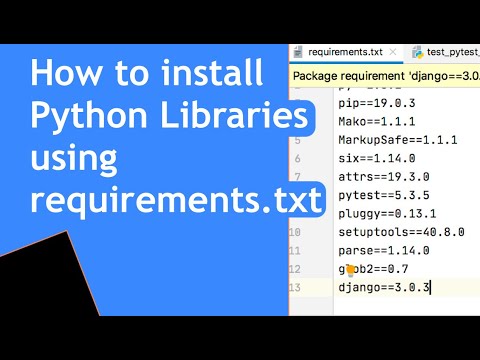
Found 11 images related to pip install requirements.txt -r theme
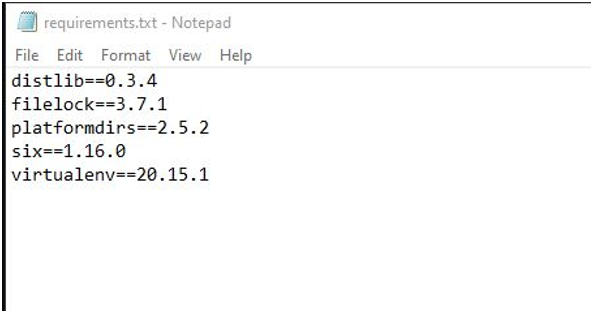
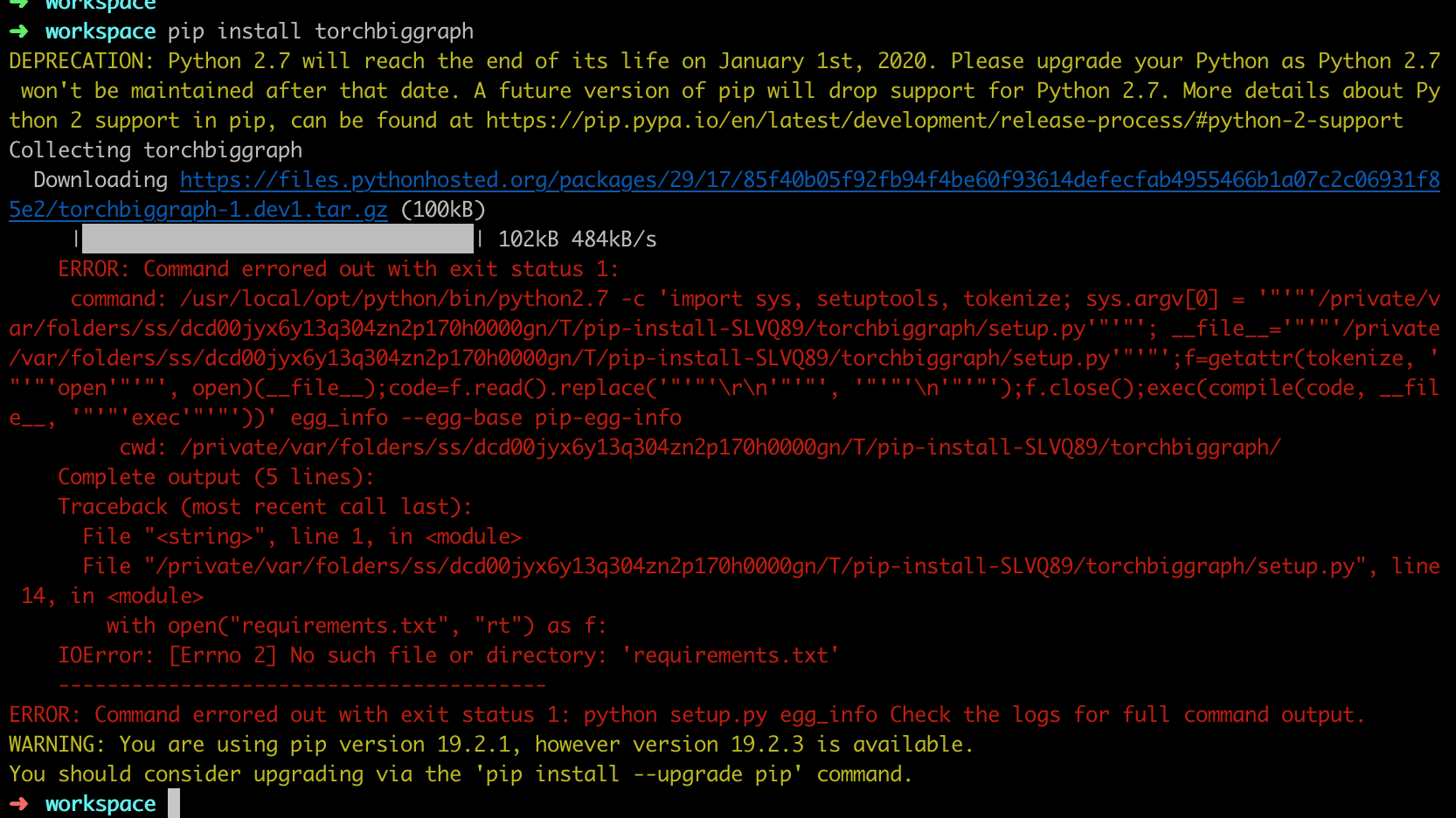

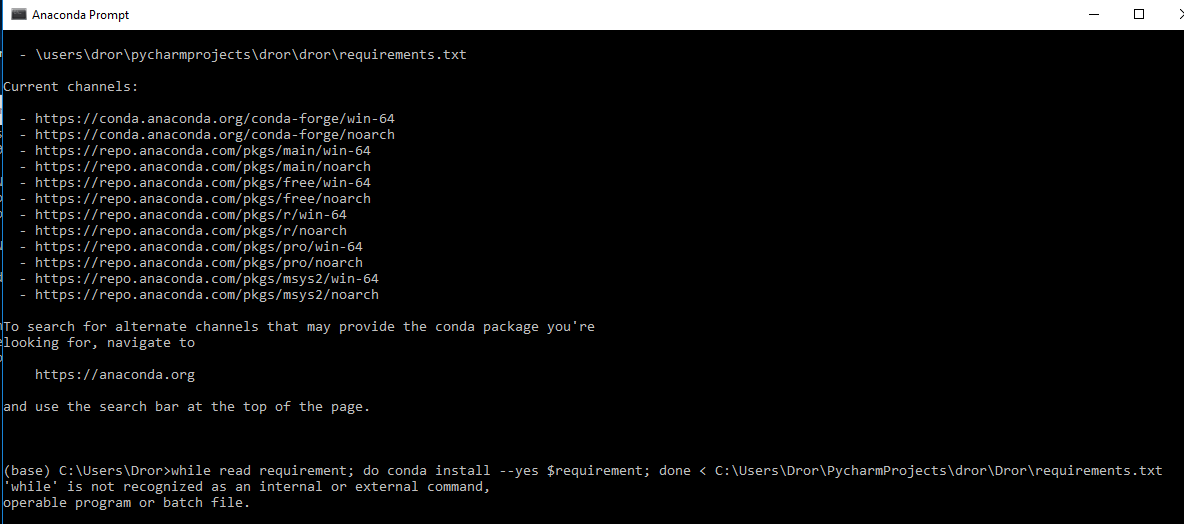


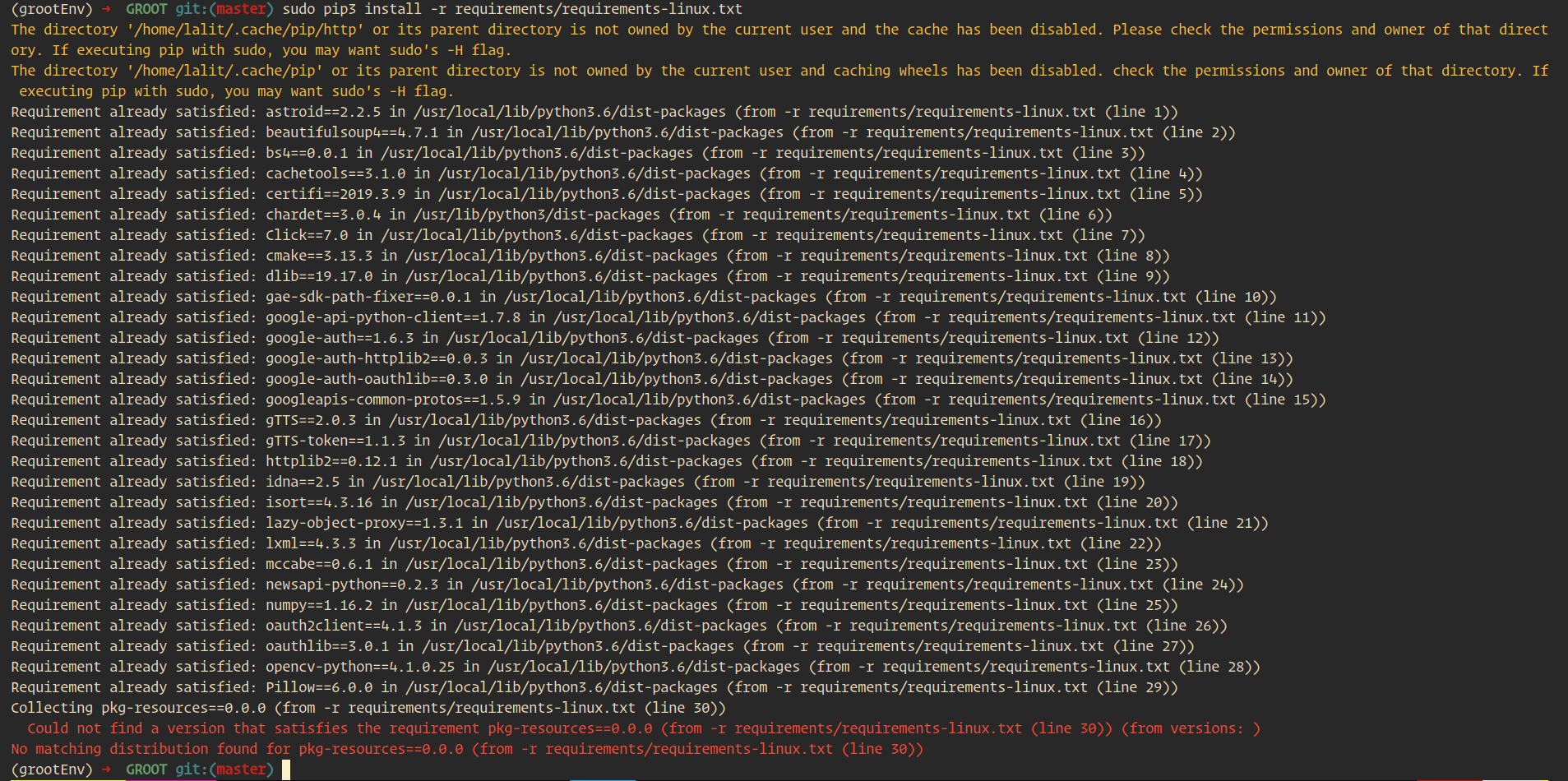





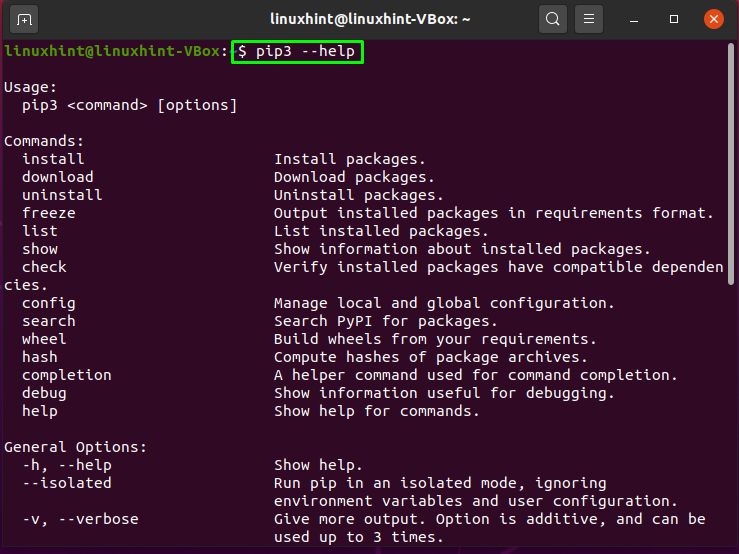




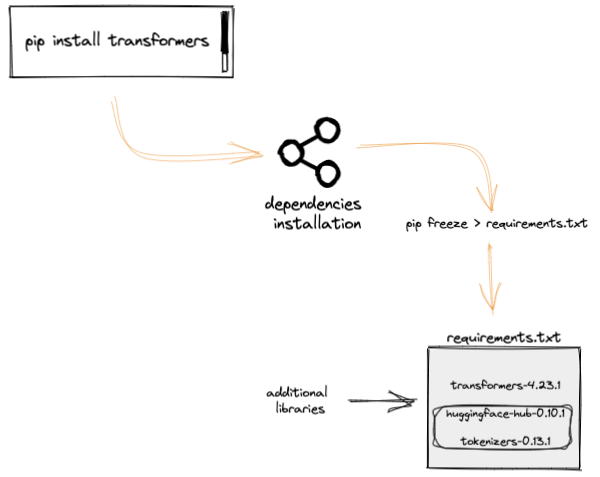


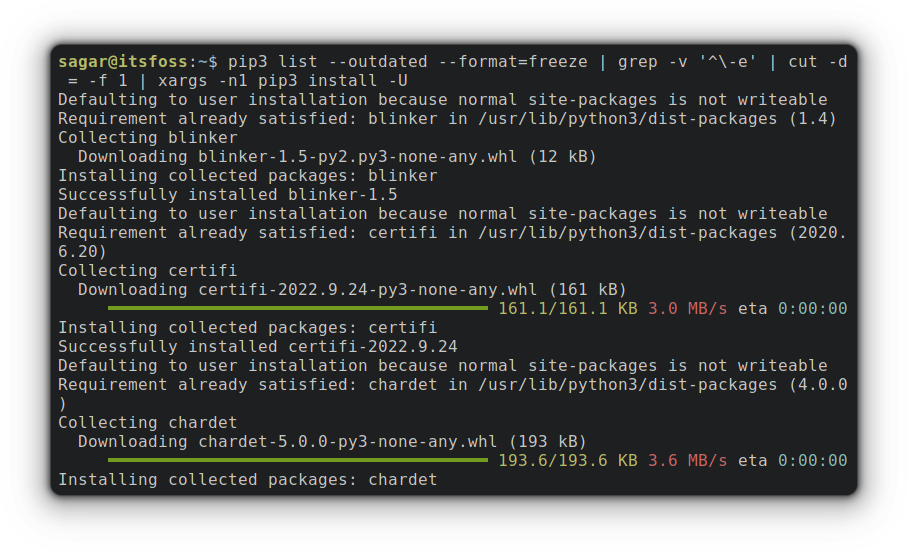

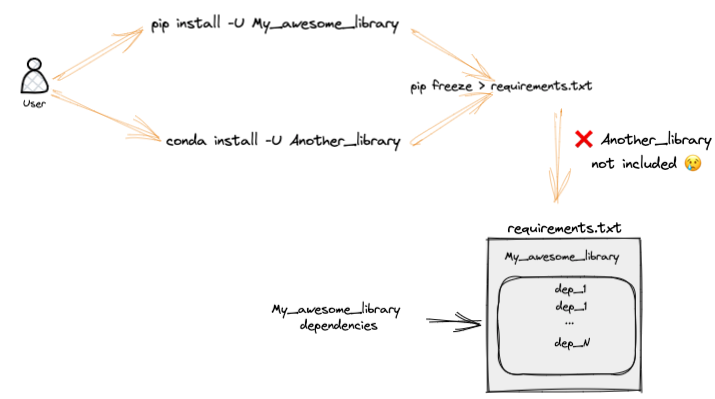
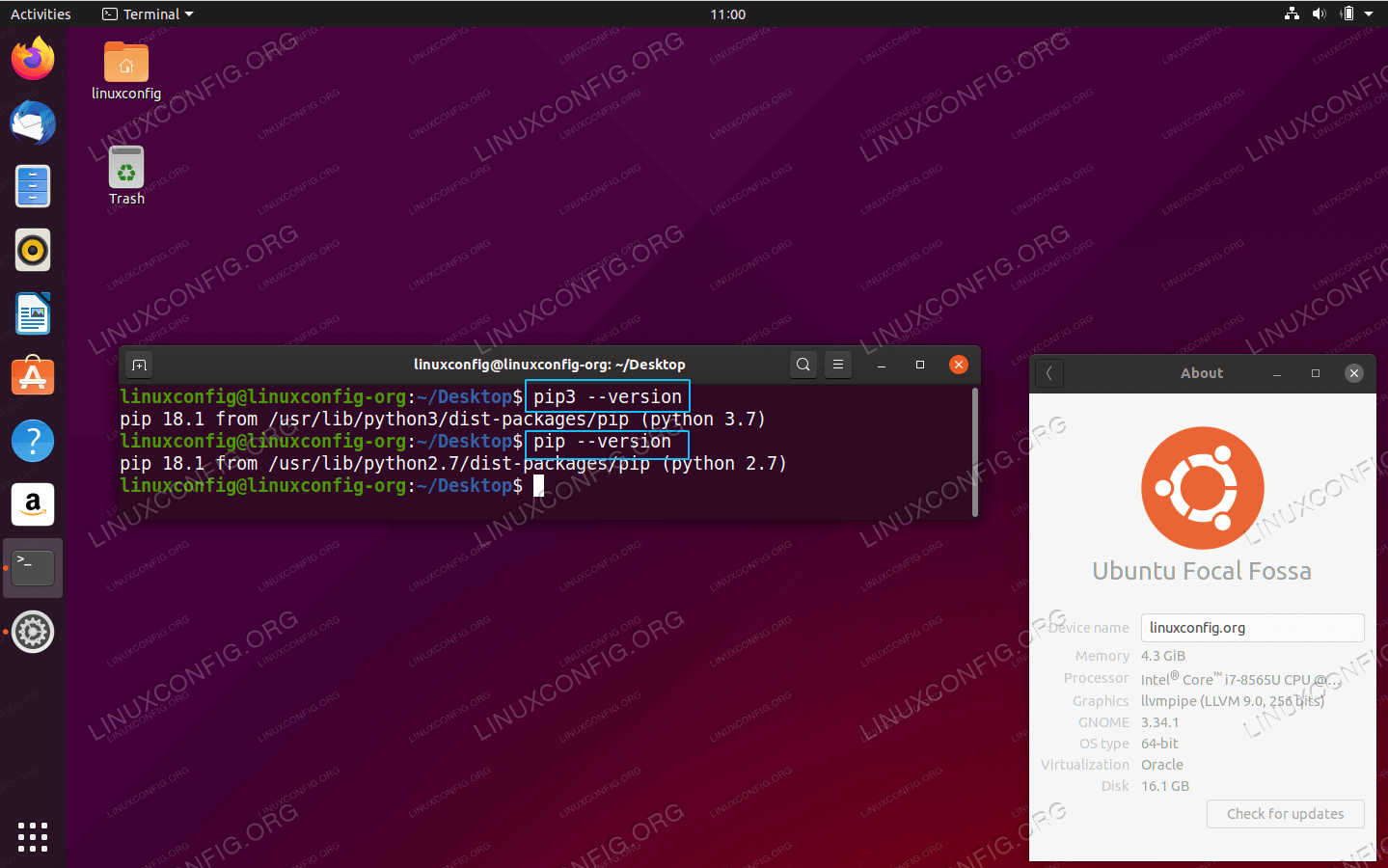
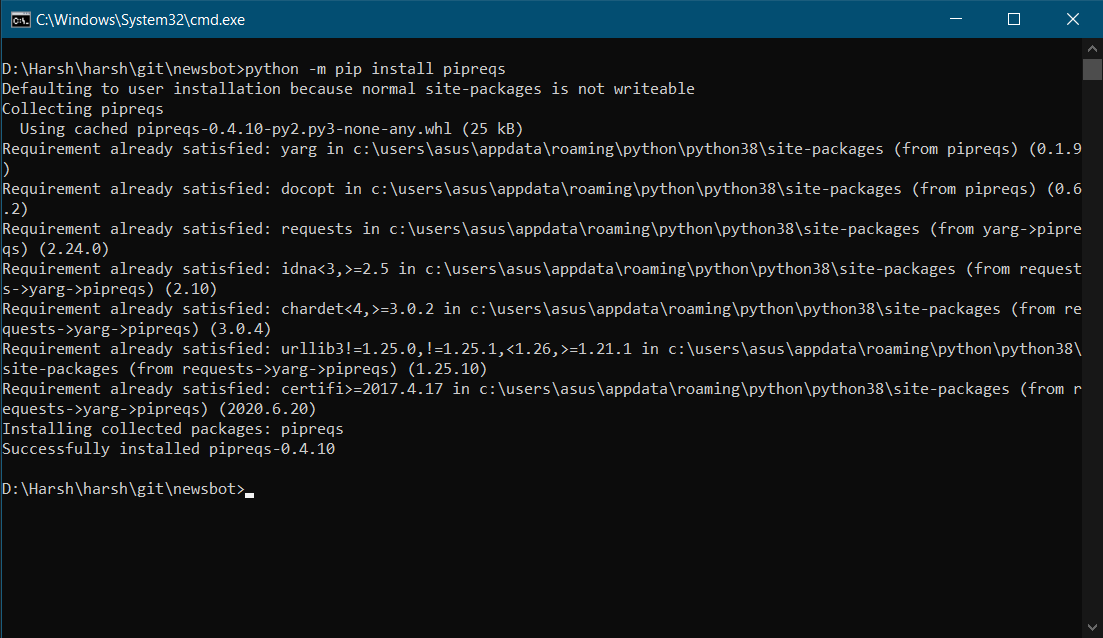



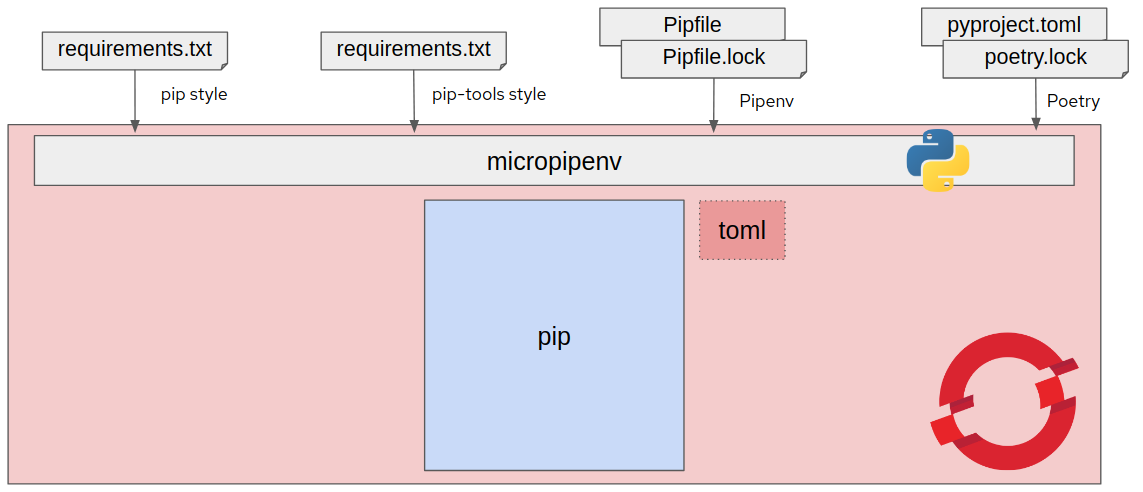
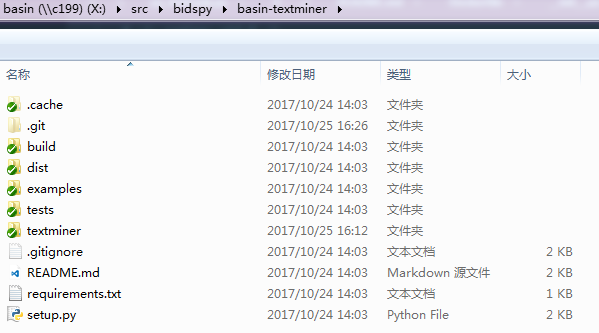








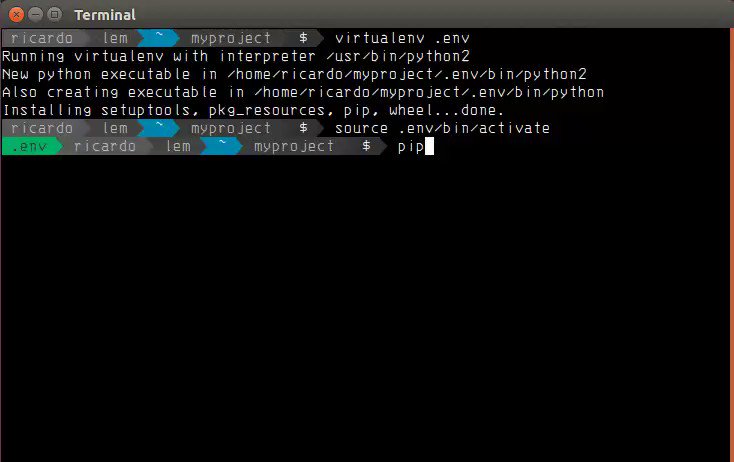







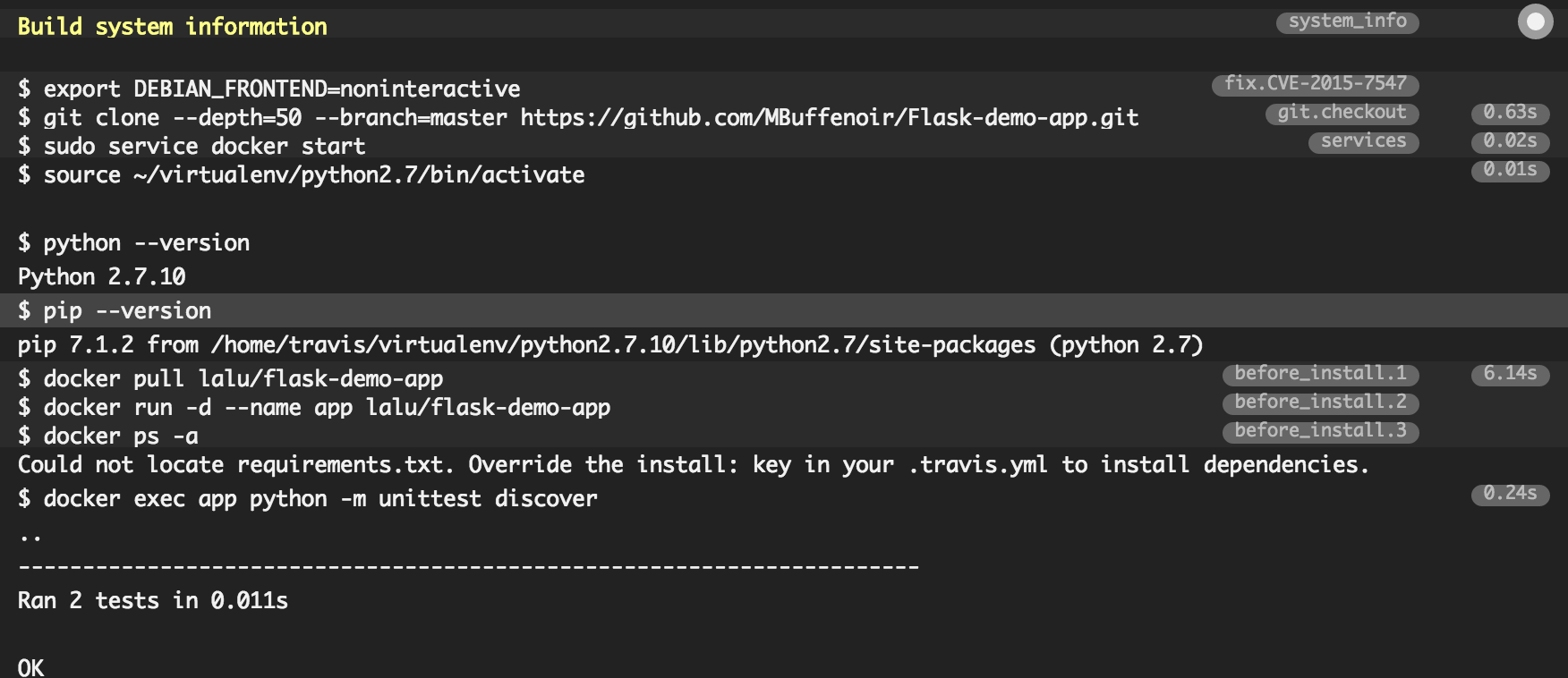

Article link: pip install requirements.txt -r.
Learn more about the topic pip install requirements.txt -r.
- Use requirements.txt (Python only) – Domino Data Lab
- How can I install packages using pip according to the requirements.txt …
- How to install Python packages with pip and requirements.txt – nkmk note
- pip install -r requirements.txt not installing libraries in vs code virtual …
- how to create requirements.txt python? | Scaler Topics
- How do I use requirements.txt to install all dependencies in a …
- Python requirements.txt File – Linux Hint
- https://stackoverflow.com/questions/7225900/how-ca…
- Generating the requirements.txt file – Mastering Python for …
- Manage dependencies using requirements.txt | IntelliJ IDEA …
- Python Language Tutorial => Create a requirements.txt file of …
See more: nhanvietluanvan.com/luat-hoc